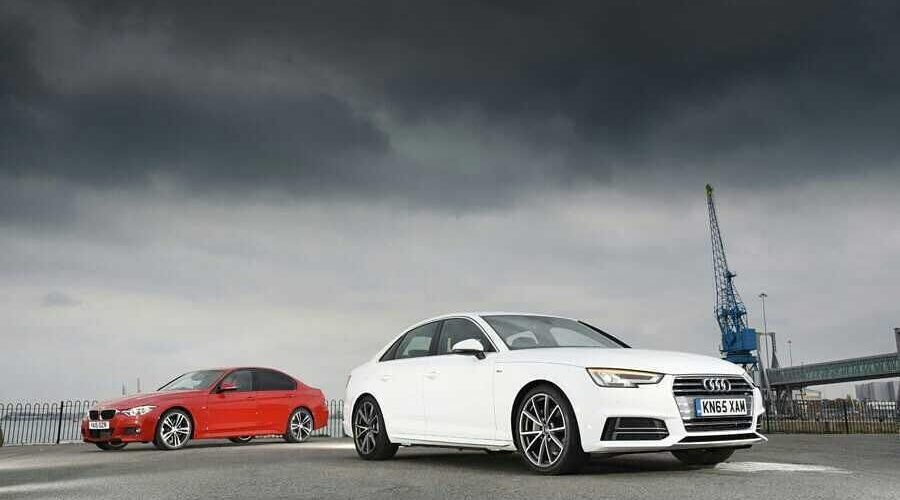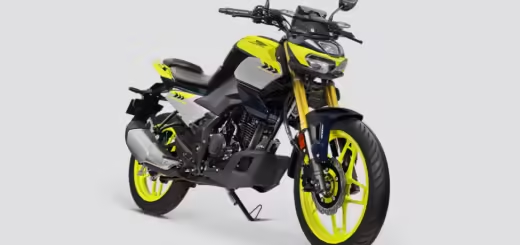BMW 3 Series vs Audi A4 – Luxury Sedan Comparison

Compact luxury sedans once reigned supreme. Crossovers captured headlines, but when you want a driver-centric car that still feels upscale and refined, few models match the appeal of the BMW 3 Series and the Audi A4. In 2025, both cars bring strong credentials. The BMW 3 Series in its long-wheelbase (LWB) guise continues to set the benchmark for sporty luxury sedans in India, while the Audi A4 focuses on technology, refinement and value. This detailed comparison looks at design, performance, tech, pricing, ownership costs and upcoming developments — so you can decide which one wins for you.
Snapshot: What the Cars Are in 2025
BMW 3 Series (Indian spec)
- The model sold in India is the Long Wheelbase (LWB) version, formerly branded “Gran Limousine.” It offers more rear-seat space while maintaining the 3 Series driving dynamics. Its length: 4,819 mm and wheelbase 2,961 mm illustrate how it leads the segment in rear-seat comfort.
- Engine for the petrol version: 2.0-litre turbo-petrol producing around 258 hp and 400 Nm of torque, paired to an 8-speed automatic and offering 0-100 km/h in about 6.2 seconds. A diesel variant also offers 188 hp and 400 Nm via the 2.0-litre turbodiesel.
- Pricing in India for the LWB started from about ₹62.60 lakh (ex-showroom) when launched, with a single fully-loaded variant initially.
- BMW also offers special editions: In 2025, BMW India released “50 Jahre” limited-edition versions of the 3 Series LWB and the M340i, each capped at just 50 units.
Audi A4 (Indian spec)
- The Audi A4 features a 2.0-litre TFSI turbo-petrol engine delivering around 204 hp (150 kW) and 320 Nm of torque, paired to a 7-speed S-tronic automatic transmission. The 0-100 km/h time is claimed at 7.1 seconds, and top speed 241 km/h.
- Mileage (ARAI claimed) around 17.4 km/l in India.
- Pricing: With recent adjustments in India, the A4 ex-showroom price starts around ₹46.25 lakh (after GST reductions) and goes upward depending on variant and options.
- Audi has also introduced a “Signature Edition” in the A4 lineup in 2025 to refresh interest and offer limited-run exclusivity.
Design & Road Presence
BMW 3 Series
The 3 Series LWB retains the sporty silhouette that has defined the 3 Series for decades — long hood, short front overhang, well-proportioned stance. With the LWB version, BMW stretches the rear section to deliver superior second-row space, yet keeps the front-end cues familiar. This combination delivers two messages: luxury and driving intent. On the road, the BMW commands attention: the wider emphasis, premium touches like gloss-black or satin chrome exterior finishes and the hint of sport-oriented styling set it apart. For those who want presence and engagement, this car hits both marks.
Audi A4
Audi takes a more understated approach. The design language emphasises clean lines, precise detailing and a low profile. It doesn’t shout for attention; it exudes quiet confidence. The front end features the broad single-frame grille, sharply defined LED DRLs, and body proportions that feel modern and premium rather than aggressive. On the road, the A4 delivers a refined presence rather than a sporty one. If you prefer elegance over ostentation, the Audi appeals strongly.
Cabin, Infotainment & User Experience
BMW 3 Series
BMW treats the driver as the centre of the cabin. The cockpit layout prioritises ergonomics: controls angled toward the driver, comfortable seating and direct steering feel. The 2025 version adds the latest iDrive system (version 8.5 or similar) with a curved display that combines a 12.3-inch digital driver display and a 14.9-inch infotainment touchscreen. Rear-seat passengers in the LWB enjoy class-leading legroom thanks to the extended wheelbase. Premium materials, ambient lighting and detailing like ambient lighting strips and premium audio systems add to the sense of occasion. The balance of driver-focus with rear comfort sets this car apart in its category.
Audi A4
Audi emphasises technology and clean UX. Its Virtual Cockpit digital cluster offers high resolution, customisable displays and excellent legibility. The infotainment setup is intuitive, with a 10-inch + touchscreen layout, wireless smartphone integration and premium audio options. The cabin atmosphere is refined: minimal clutter, high-grade materials and good build quality. Rear-seat space is comfortable for adults; the A4 might not match the BMW LWB in sheer legroom, but for most buyers it offers sufficiently generous rear seating. The overall experience in the Audi leans toward luxury, calm and modern tech rather than outright sportiness.
Powertrains, Performance & Ride/Handling
BMW 3 Series
The driver-centric nature of the BMW shows in the engine, chassis and dynamics. The petrol version (2.0-litre turbo) generates around 258 hp and 400 Nm in the Indian market, with 0–100 km/h in about 6.2 seconds (for the LWB). The diesel version offers 188 hp and 400 Nm. Globally, the 3 Series includes versions such as the 330i (255 hp, 295 lb-ft) and the M340i (3.0-litre inline-six, ~386 hp) that underline the performance potential. The rear-wheel drive layout (or optional AWD) helps deliver sharp handling, good steering feedback and enjoyable dynamics. BMW balances sporty behaviour with daily usability: ride quality remains compliant while body control stays firm. If you like to drive twisty roads as much as you commute, the 3 Series delivers.
Audi A4
The A4’s 2.0-litre turbo-petrol engine produces around 204 hp and 320 Nm of torque, with a 0-100 km/h time of 7.1 seconds in its Indian spec. The driving experience emphasises smoothness, refinement and composure over aggressive handling. The dual-clutch S-tronic transmission delivers quick shifts, but the overall feel is more “luxury sedan” than “sports sedan”. Steering is precise; the suspension soaks undulations well; NVH levels remain impressively low. If your priority is relaxed yet confident driving, the Audi fits well.
Verdict: If you prioritise driving dynamics and sharp performance, the BMW takes the lead. If you prefer a more composed ride, elegant behaviour and refined comfort, the Audi delivers.
Safety & Practicality
Both cars offer strong safety credentials and good practicality for their class.
Safety
- The BMW 3 Series (global G20 version) achieved a top adult-occupant protection score of 97% in Euro NCAP testing under the 2019 protocol.
- The Audi A4 (B9 version) earned an adult occupant protection rating of about 89% under its corresponding test.
Both models come with multiple airbags, stability control, driver-assist features such as automatic emergency braking, lane-keeping assist, blind-spot monitoring and adaptive cruise (depending on variant).
Practicality
- Rear-seat space: The 3 Series LWB leads in legroom thanks to its extended wheelbase. For owners who spend time in the back seat (chauffeured or family use), this gives the BMW a tangible advantage.
- Boot space: While figures vary by market/configuration, both cars offer competitive trunk volumes in their segment. The A4 offers roughly 460 litres boot space in India.
- Cabin usability: Both cars deliver premium finishes, comfortable seating for five, modern climate control and high-quality materials. The Audi offers a slightly calmer and quieter cabin experience; the BMW’s cabin emphasises more sensory feedback (engine note, steering feel) while maintaining luxury.
- Running costs: The A4’s petrol engine claims around 17.4 km/l in India, which plays favourably for fuel economy. The BMW petrol version will consume more in performance-biased use; the diesel 3 Series offers improved economy for high mileages.
Features & Trims (India Focus)
BMW 3 Series LWB (India)
- Feature highlights: Adaptive LED projector headlights, panoramic sunroof (depending on variant), dual-curved displays (12.3-inch + 14.9-inch), ambient lighting, premium audio, comfort rear seats, optional driver-assist upgrades.
- Variant structure: The 2025 LWB version at launch was offered in the fully-loaded 330Li M Sport form, starting at approx ₹62.60 lakh ex-showroom. Later diesel 320Ld M Sport Pro variants entered the line-up.
- Special edition: BMW launched “50 Jahre” editions of the 3 Series LWB and the M340i, limited to 50 units each. These editions bring unique badging, premium extras and collectible status.
Audi A4 (India)
- Feature highlights: Virtual Cockpit digital cluster, 10-inch infotainment with wireless Apple CarPlay/Android Auto, ambient lighting, sunroof, leather upholstery, premium audio (higher trims), advanced driver-assist package.
- Variant structure: The A4 40 TFSI petrol is the mainstream model. Prices post-GST cut (Sept 2025) start from around ₹46.25 lakh ex-showroom and go up depending on trim and options. A “Signature Edition” launched as limited run in 2025 adds exclusivity and premium touches.
- Ownership perks: Audi India introduced an extended warranty and roadside assistance package: up to ten years warranty plus fifteen years roadside assistance for selected models, enhancing value for long-term owners.
Pricing & Value (India, Late-2025 Reality)
Audi A4
- With the GST (Goods & Services Tax) reform effective 22 September 2025, Audi India slashed prices across its line-up by ₹2.6 lakh to as much as ₹7.8 lakh. For the A4, that means a revised starting price around ₹46.25 lakh ex-showroom.
- For buyers this means luxury sedan access at a more reachable level, particularly when compared with previous pricing or rival premium sedans.
BMW 3 Series LWB
- The 2025 LWB version launched from around ₹62.60 lakh ex-showroom.
- The higher-performance BMW M340i (though not always sold concurrently in India) also has a strong value proposition for performance-oriented buyers when considered in global context.
- Given its segment-leading rear space, driver engagement and brand perception, the premium over the Audi can be justified — if you value the attributes it adds.
Value comparison
- The Audi delivers excellent value: relatively lower entry cost into the luxury sedan segment, modern tech, strong ownership perks and high build quality.
- The BMW commands a premium but offers superior space, better dynamics and stronger brand cachet among driver-enthusiasts.
- For buyers focussed on total cost of ownership, inclusion of extended warranty/roadside assistance (Audi) plus fuel economy/maintenance outcomes will play an important part. BMW may have slightly higher running costs in petrol variants due to stronger performance orientation.
Technology & Future-Proofing
BMW
- BMW continues to push forward with its technology roadmap. For example, the company teased a new electric sedan (named i3) built on its upcoming Neue Klasse electric architecture, signalling that BMW intends to keep the 3 Series family relevant by aligning styling and technology with future EVs.
- The current 3 Series already benefits from the latest iDrive infotainment generation, connected services and in some markets advanced driver-assist hardware.
- For buyers who are technology-savvy and want their car to age well, the BMW’s focus on evolution and performance suggests strong longevity.
Audi
- Audi leverages its well-established digital cockpit and tech suite. The Virtual Cockpit remains one of the best in class. The 2025 A4 in India includes updated features such as ambient lighting, premium audio and good connectivity.
- However, Audi has also indicated that its naming strategy may shift: for example, future ICE compact sedans may adopt the “A5” name in some markets while the “A4” name transitions toward electrified variants. That signals the current A4 may be near the end of its ICE lifecycle.
- For buyers concerned about resale value, future branding and platform changes could impact how long this generation remains fresh.
Ownership, Running Costs & Reliability
Running Costs
- The Audi A4’s claimed mileage of 17.4 km/l in India gives it an edge in fuel economy for the petrol option.
- The BMW petrol version will consume more fuel, especially if driven enthusiastically; the diesel version provides better economy but at a higher initial price.
- Scheduled maintenance, parts availability and brand service network will affect cost over time; both BMW and Audi have strong service networks in major Indian cities, though luxury-brand maintenance tends to cost more than mainstream equivalents.
Warranty & After-Sales
- Audi’s extended warranty and roadside assistance (10 years warranty, 15 years RSA) gives a comfort factor for long-term owners.
- BMW offers competitive after-sales support but doesn’t (as of now) package exactly the same long-horizon warranty across all models in India.
- Resale value will depend on condition, variant rarity (special editions help), market demand and future brand/technology shifts.
Reliability & Practical Considerations
- Both cars share strong safety ratings and build quality.
- BMW’s LWB version improves rear comfort considerably; if you carry passengers frequently, that matters.
- Audi’s simpler engine variant (2.0-litre turbo petrol) may be easier to maintain in some respects than a high-output or diesel variant.
- Ground clearance, service costs and local fuel quality are important in India: some owners report tighter ride tolerances or more demanding servicing for performance-biased models like BMW’s.
- If you retain a car for a long time (10+ years), factors such as warranty, software updates, and parts availability will weigh heavily.
Which One Should You Buy?
Choose the BMW 3 Series if you:
- Prioritise driving dynamics: steering feel, chassis stability, agility.
- Need rear-seat space (LWB version) for family or professional use.
- Want a strong brand image associated with performance luxury.
- Are okay paying a premium and potentially higher running costs for the extra engagement and space.
- Appreciate that this model may carry more enthusiast appeal and possibly stronger resale amongst buyers seeking driving pleasure.
Choose the Audi A4 if you:
- Prefer refined comfort, quiet cabin and modern tech features.
- Want the best value in luxury sedan segment — strong features for the money.
- Are attracted to extended warranty/roadside assistance programmes.
- Will use the car mostly in daily driving and valuing smoothness, elegance and premium ambiance.
- Want simplicity, strong brand image and less of a focus on sporty driving.
Trim & Variant Recommendations (India)
- If you’re inclined to the BMW, the petrol 330Li M Sport is a sweet spot if you primarily drive it yourself and occasionally carry passengers. If you cover high mileage, the 320Ld diesel variant makes sense for efficiency. Also consider the “50 Jahre” edition if you want exclusivity.
- For Audi, the 40 TFSI Premium Plus or Technology trim hits the sweet spot for features vs price. The Signature Edition gives extra exclusivity if you want that.
- In both cases, evaluate your usage: city vs highway, chauffeur vs self-drive, running hours per year, resale strategy.
Looking Ahead (and Should You Wait?)
Audi
Audi India’s price cuts following the GST reform make the A4 very competitive now. However, there is indication that Audi’s future compact-sedan strategy may evolve: the A5 name may take over ICE sedan duty while A4 focuses on electrified models. That suggests the current A4 could see a shorter refresh cycle, which may affect resale or upgrade timing.
BMW
BMW’s roadmap shows strong commitment to the 3 Series family and performance heritage. The teased all-electric i3 sedan (on the Neue Klasse platform) confirms BMW remains pushing technology forward, which bodes well for perception. If you choose the 3 Series now, you purchase a model with strong brand support and driving DNA — and you may benefit from longer lifecycle before next complete redesign compared to rivals.
Should You Wait?
- If you plan to keep the car for many years, you might consider waiting for next-gen models or for further price drops.
- But if you need a luxury sedan now, both cars are strong offers. The A4 gives immediate value; the 3 Series gives driver engagement and presence. Waiting may bring newer tech or hybrid/electric variants, but you also delay enjoyment and usage.
- Consider how important new features such as next-gen infotainment, EV variants or updated safety tech are for you. If incremental improvements don’t matter much, buying now makes sense.
Final Verdict
Both the BMW 3 Series and Audi A4 represent the best of compact luxury sedans in 2025. The Audi A4 wins on value, tech, ownership perks and refined everyday comfort. The BMW 3 Series wins on driving engagement, rear-seat space (in LWB guise), and brand performance credentials.
If you are looking for the most inclusive luxury sedan for the budget, and will spend much of your time behind the wheel in a calm environment, the Audi A4 offers tremendous appeal. If you want a sedan that can thrill, carry passengers in comfort, and deliver strong prestige, the BMW 3 Series justifies its premium.
Ultimately, ask yourself: Do I drive for feeling or ride for luxury? If the former, go BMW. If the latter, go Audi. Either way, you end up with two of the most complete luxury sedans on sale today.
Note
All specifications, features and pricing reflect publicly available Indian market data as of late-2025. Actual equipment, options and prices may vary by city, variant and optional extras. Always verify with the local authorised dealer before purchase.













